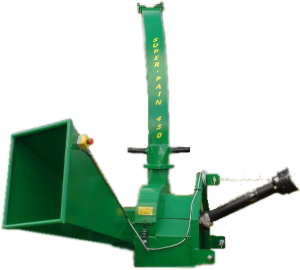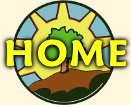Jean PAIN, experimenter and curious.
In 1964, Jean PAIN and his wife Ida settled in the "Templars Domain" in Villecroze, Var, South of France.
They are in charge of guarding this area of 240 hectares.
In return they are allowed use their environment to produce their food.
They give themselves the goal to live as close as possible to the nature.
They start many cultures, and raise a small herd of goats that provide them the necessary for an acceptable life in these places.
As a very curious man, Jean PAIN made many experiences, just as extraordinary as each other.
He will "cultivate" quackgrass, "breed" mole crickets, etc.
All these experiences are not made by chance, but to satisfy his thirst of knowledge.
He began by directing his herd of goats in a particular way.
He decided, for example to no longer make his goats pregnant, or to stop overseeing them, ... but that's another story!
So Ida and Jean PAIN cultivate their garden and "raise goats."
As Jean PAIN wants his goats to be very healthy, he brings special care for their litter and uses a lot of straw.
Of course, this litter is turned into compost and this compost is used to fertilize their garden.
But the straw is too exepensive for his small budget...
A bright idea.
One day, Jean PAIN decides to use the small brushwood surrounding that only cost the effort to pick them up, and gradually replacing the straw.
When using this new composted litter on his crops, he noticed a significant improvement in these.
In his thoughts, sitting alone on a rock in the middle of the Mediterranean forest, he wonders how the forest grows on so poor soils.
Could they were twigs, leaves, needles, all these materials from the bush that were the source of forest fertility?
What if it was the contribution of these brushwood in the litter of his goats that generated the improvement in its cultures?
He decided at that time to make a compost made up exclusively with small brushwood collected in the undergrowth.
Unfortunately, composting methods he learned in many professional reading do not let him to make an acceptable composting.
After many experiments, trials and errors, he managed for the first time to make a compost composed exclusively of brushwood and water.
He does not know yet that he has invented a fantastic compost with extraordinary abilities.
Results to validate.
This was in 1969 when Jean PAIN applied on his garden, for the first time, the "Brushwood Compost" that he had produced.
The results are spectacular and surprise the few people visiting him to buy his goat cheeses, that are real culinary masterpiece.
Among these visitors figures Henri STHELE, research director at the station of the National Institute of Agronomic Research of Antibes.
Since a few years Henri STHELE spends much time during his visits, discussing with Jean PAIN about agronomy. He brought to Jean PAIN all the official literature about it. This will enable Jean PAIN access to the knowledge of any agricultural engineer.
Henri STHELE is of course very surprised of the results Jean PAIN obtained with this first application of "Brushwood Compost".
But, as a senior scientist, he gently pointed out that the quality of the soil on which Jean PAIN had his garden was perhaps not unrelated to the amazing results obtained;
in addition, these outstanding results could they be replicated?
There, Jean PAIN's self-esteem is somewhat wrikled.
A garden on a hot rock.
He then decided to search on the domain a place where only the effect of the compost will be highlighted.
And it is in 1970 that Jean PAIN decides to install an experimental garden on a high place in the domain where nothing grows, burning sun in summer and where water is not naturally present.
We are on top of a hill. 200 to 300 m² are bare of vegetation. The soil is a sandy dolomite wich will be declared by the analysis totally unsuitable for culture. No water available.
The location is just cleared of large rocks that can interfere with crops and a small amount of ripe compost is mixed with the first centimeters of soil.
7 centimeters of young "Brushwood Compost" are spread and covered with 10 cm of dry grass.
As we are in the middle of the bush, it is necessary to enclose the garden with a solid fence so that future crops will not be eaten by wildlife and Jean PAIN's goats that graze in total freedom.
In the first year, the result corresponds to those expected.
Vegetables grow in harmony and the production is such as could be expected...
A production worthy of a valley floor garden richly maintained!
Yet here no watering, no weeding, no treatment of any kind, no work of soil, just the "Compost brush" seedings, plantations and... harvests.
Jean PAIN is satisfied with his experience and all that could have stopped there, because Jean PAIN is not one to have to climb the hill every day to harvest the vegetables he wishes to eat.
Notoriety.
But then one day a reporter from the "Petit Provencal" meets him along the path down to the old buildings erected by the Templars in the twelfth century, with the hope of of obtaining from Jean PAIN the permission to do an article on his famous predecessors.
Jean PAIN said there is no objection but for now, in the middle of hot day of summer 1970, he has "records" to do on the hill.
The journalist, having no other immediate activities, accompanies Jean PAIN.
After several minutes of steep trail, the two men lead to the hilltop where shines Jean PAIN's garden and where vegetables go beyond of the fence.
The journalist, who is also a experienced gardener, is completely amazed by this vision and understands very quickly that this garden has a few secrets.
From the earliest explanations of Jean PAIN, his initial report is forgotten and this will be an article on the extraordinary garden Jean PAIN he will release a few days later.
This article will have the effect of a bomb and will be the starting point of a great adventure.
Jean PAIN that thought he had found serenity and tranquility in his new job will become one of the most publicized men of the region in the seventies.
A few days after this article, the editor of the agency NICE MATIN from Draguignan comes write a great article about the garden of Jean Pain and his experience.
The "METHODS OF JEAN PAIN" were born.
From this moment it is a procession of visitors that will follow one another on the domain to view this extraordinary garden.
Jean PAIN will even be forced to establish a single day visit per month.
He will maintain the garden from 1970 to 1980.


